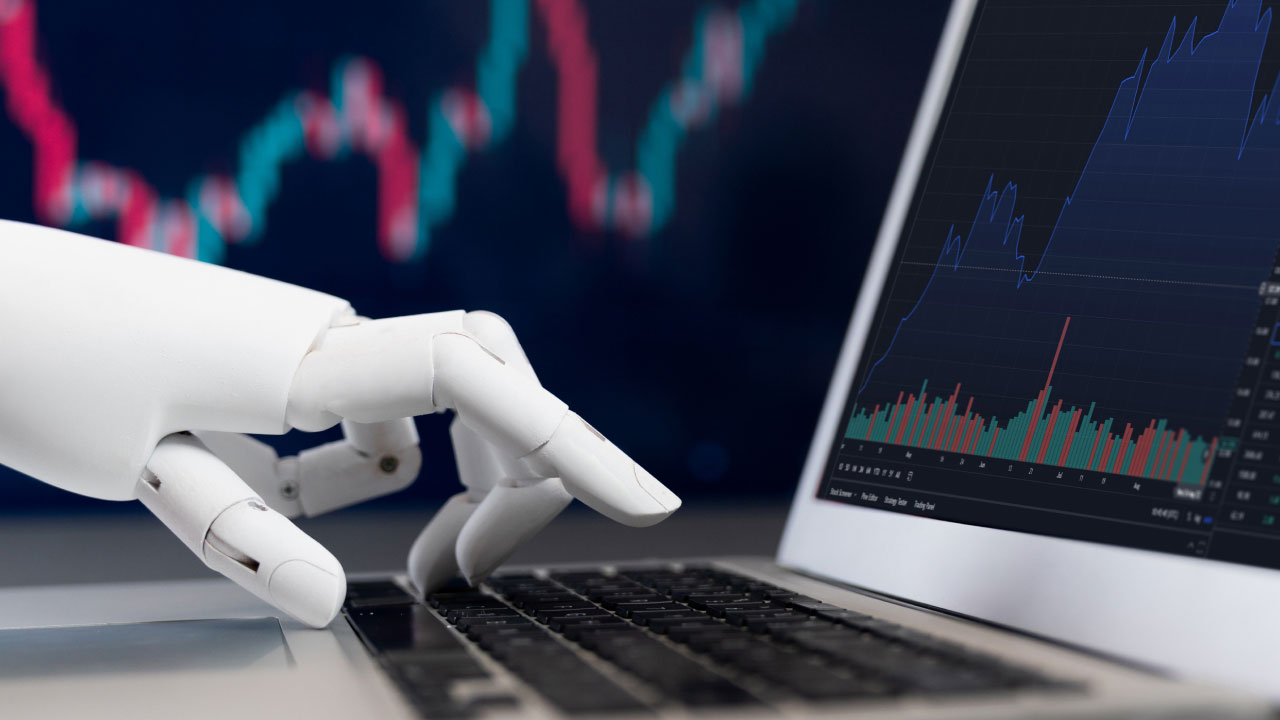ChatGPT's incorporation into algorithmic trading presents an avenue for leveraging AI in forex markets. By utilizing its language processing and sentiment analysis capabilities, traders can glean insights, devise strategies, and manage risks.
Yet, it's crucial to acknowledge potential drawbacks. While AI offers promise, privacy and data security concerns also exist. Moreover, ChatGPT's inability to fetch post-September 2021 data curtails its analytical capabilities.
This article presents a comprehensive view, spotlighting both the benefits and challenges of using ChatGPT for algorithmic trading.
What is ChatGPT?
ChatGPT, a generative AI language model from OpenAI, has the potential to comprehend and generate human-like text, including trading strategies. Trained on extensive data, it's adept at producing coherent responses. This utility extends to chatbots, content generation, and trading strategies. However, being a relatively new technology, it carries inherent risks. ChatGPT's outputs may be inaccurate due to its AI-driven nature.
ChatGPT trading strategies for forex
Mean reversion
Mean reversion strategies are based on the concept that asset prices tend to return to their historical average or mean over time. ChatGPT could assist in identifying potential mean reversion opportunities by analyzing various data sources.
ChatGPT can process historical price charts, technical indicator values, fundamental data (such as economic indicators), and relevant news articles. It can look for patterns, trends, and anomalies within these data sets. For instance, it examines price movements relative to moving averages, compares current indicator values to historical levels, and considers external events that might influence market sentiment.
Trend-following
Trend-following strategies involve capitalizing on existing market trends (uptrend or downtrend). ChatGPT could analyze several technical indicators (like moving averages and MACD.), news sentiment, and market data to gauge the strength and direction of trends.
The AI tool can also analyze technical indicators by processing historical price and volume data given by the users. It could potentially help traders identify the beginning of a trend, assess its potential longevity, and recommend suitable entry and exit points.
Breakout trading
Breakout strategies aim to gain from sudden price movements in the upward or downward direction that occur after periods of consolidation.
ChatGPT could analyze historical price patterns, volatility data, and news releases based on the tr to analyze potential breakout points. Traders could use this information to place pending orders just above or below those levels, allowing them to capitalize on the breakout when it occurs.
How to implement algorithmic trading with ChatGPT
- Gathering forex data: ChatGPT cannot access historical data on its own. That is why traders first need to collect all the forex data, encompassing currency pairs, historical price trends, economic news, and indicators. This will serve as valuable input for the machine learning models.
- Process feature engineering: Leverage ChatGPT to process the forex data, facilitating the creation of effective features that enable the machine learning models to make well-informed analysis and trading decisions.
- Selecting the right model: Collaborate with ChatGPT to choose the most suitable machine learning algorithm for forex trading, considering patterns and data specifics, such as neural networks, support vector machines, or decision trees.
- Training and fine-tuning: Utilize ChatGPT to guide the training of the chosen model using a subset of forex data and subsequently fine-tune its performance using distinct validation data to ensure precision in market analysis.
- Simulating historical performance: Employ ChatGPT to simulate the trading strategy's historical performance using past forex data, accurately factoring in real-world elements like transaction costs and slippage.
- Real-time deployment: Integrate the well-prepared model, guided by ChatGPT, into the forex trading system to generate real-time trading signals, assisting in executing timely and informed trading choices.
- Continuous performance monitoring: Continuously engage ChatGPT to monitor the real-time efficacy of the algorithmic trading strategy, allowing for timely adaptations that enhance accuracy and overall benefit based on evolving forex conditions.
Limitations of ChatGPT for forex trading
When employing ChatGPT for forex trading, addressing its legal and compliance concerns is crucial. The lack of accuracy in market analysis is a significant limitation of trading with ChatGPT. The platform explicitly acknowledges the possibility of occasional inaccuracies. Relying solely on AI without thorough research poses a substantial risk, as incorrect outcomes can emerge. Prudent due diligence is imperative to navigate these challenges and make informed trading decisions while considering legal, compliance, and accuracy factors.
Integrate ChatGPT with the trading account
AI tools can be readily integrated into traders' trading accounts to streamline market analysis. These technologies quickly consolidate and evaluate the financial data provided by traders, lowering the time spent on manual market navigation dramatically.
However, traders must conduct their own research and not only rely on decisions given by ChatGPT, as they are not always reliable. There's a possibility ChatGPT may be effective/rely on some traders, but not all.
Disclaimer: All material published on our website is intended for informational purposes only and should not be considered personal advice or recommendation. As margin FX/CFDs are highly leveraged products, your gains and losses are magnified, and you could lose substantially more than your initial deposit. Investing in margin FX/CFDs does not give you any entitlements or rights to the underlying assets (e.g. the right to receive dividend payments). CFDs carry a high risk of investment loss.




